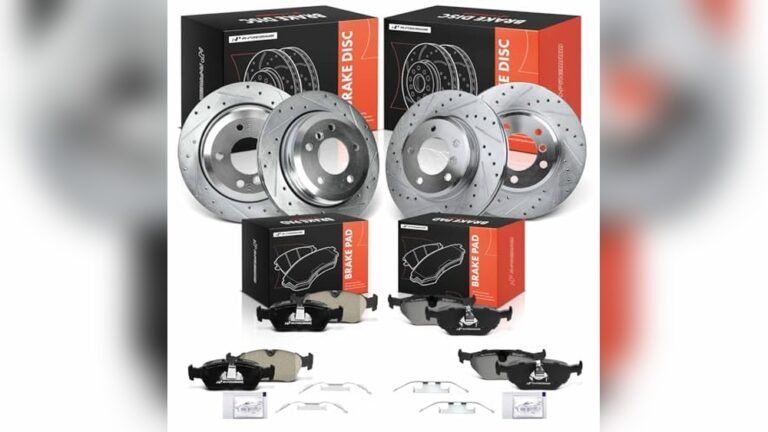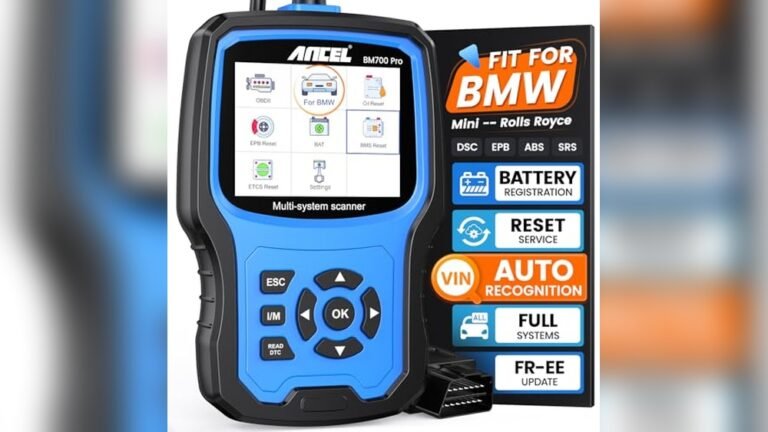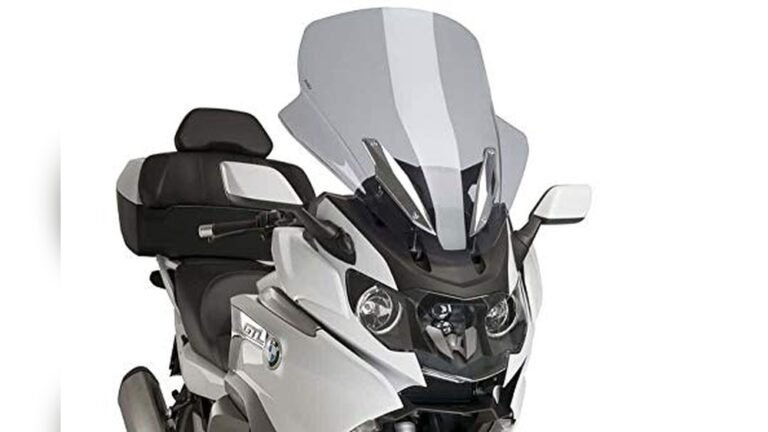To put coolant in a BMW, locate the coolant expansion tank, remove the cap, and pour the coolant into the tank. Coolant is a crucial component in maintaining the proper functioning of a BMW’s engine.
It ensures that the engine remains at the right temperature, preventing overheating and potential damage. However, knowing where to put the coolant can be confusing for some BMW owners. In this guide, we will provide you with clear instructions on where to put the coolant in your BMW, ensuring that you can effectively maintain your vehicle’s performance and longevity.
By following these simple steps, you can keep your engine cool and running smoothly for miles to come. So, let’s get started and learn how to properly add coolant to your BMW.
Recognizing Low Coolant Signs
Recognizing low coolant signs is essential to maintaining the health of your BMW. Keep an eye out for warning light indicators, as they can provide an early indication of low coolant levels. These warning lights are designed to catch your attention and alert you to potential issues with your vehicle.
Another way to recognize low coolant is through the temperature gauge readings. If you notice that your temperature gauge is consistently running higher than normal, it may be a sign that your coolant levels are low.
Lastly, a physical check of the coolant level is an effective way to identify if your BMW needs coolant. Open the hood of your vehicle and locate the coolant reservoir. The reservoir is typically a translucent plastic container with “Coolant” or “Antifreeze” labeled on its cap. Ensure that the coolant level is within the specified range indicated by the lines or marks on the side of the reservoir.
Preparing To Add Coolant
Adding coolant to your BMW is an important maintenance task that ensures the proper functioning of the engine’s cooling system. To start, gather the essential tools and materials you will need, including a container of coolant specifically formulated for BMW vehicles, a funnel, and a clean cloth. Engine cooling and safety tips: Ensure that the engine is cooled down before attempting to add coolant to avoid burns. Inspect the coolant reservoir: Locate the coolant reservoir in your BMW’s engine bay. Depending on your BMW model, it can usually be found near the radiator. Check the coolant level: The coolant reservoir has minimum and maximum level markings on its side. Ensure that the coolant level is between these marks.
Adding coolant: If the coolant level is low, carefully remove the reservoir cap and insert a funnel. Slowly pour the coolant into the reservoir, monitoring the level as you go. Replace the cap: Once the coolant has been added, securely replace the reservoir cap. Dispose of any excess coolant: If you have any excess coolant, dispose of it properly according to local regulations. Regular maintenance: It’s important to regularly check and maintain the coolant level in your BMW to ensure optimal engine performance and prevent overheating.
Locating The Coolant Reservoir
The coolant reservoir in a BMW can typically be located near the engine, close to the radiator. It is crucial to find the correct location to ensure proper coolant levels and prevent overheating.
Visual Guide For Different Bmw Models
The coolant reservoir is an essential component of the cooling system in BMW cars. It serves as a storage tank for coolant, allowing the engine to maintain optimal temperature during operation. To locate the coolant reservoir, refer to the visual guide below for various BMW models:
| BMW Model | Coolant Reservoir Location |
|---|---|
| BMW 3 Series (E46) | Located at the front right corner of the engine bay |
| BMW 5 Series (E39) | Located near the firewall on the passenger side |
| BMW X5 (E53) | Located at the front left corner of the engine bay |
| BMW 7 Series (E38) | Located on the right side of the engine bay |
Each BMW model may have slight variations in the location of the coolant reservoir. It is important to identify the correct cap on the reservoir before adding or checking the coolant level. Refer to the owner’s manual or service guide for your specific BMW model to ensure you locate the reservoir cap accurately and avoid any potential damage to the cooling system components.
Step-by-step Coolant Refill Process
| Step-by-Step Coolant Refill Process |
|---|
To safely refill the coolant in your BMW, start by removing the reservoir cap. This is usually located on top of the radiator or near the engine. Be cautious of hot surfaces and ensure the engine has cooled down before proceeding. Once the cap is off, carefully add the recommended coolant. Make sure to follow the manufacturer’s instructions regarding the proper coolant type and mixing ratio. Avoid overfilling the reservoir – be mindful of the maximum fill level indicated on the container. After pouring the coolant, check for any signs of leaks, such as puddles underneath the car or the smell of coolant. Inspect the hoses and connections carefully. If everything appears secure, check the coolant level. Verify that the level is within the recommended range. If necessary, add more coolant to reach the appropriate level. Finally, securely tighten the reservoir cap, ensuring it is properly sealed. Properly refilling the coolant is crucial for maintaining the optimal performance and longevity of your BMW. Regularly monitoring and replenishing the coolant can help prevent engine overheating and other costly damages. Remember to consult your vehicle’s manual or seek professional assistance if you require further guidance or encounter any difficulties during the process. |
Ensuring Correct Coolant Type
When it comes to maintaining your BMW’s cooling system, it is crucial to use the correct coolant type. Following the OEM specifications for BMW vehicles is essential to ensure optimal performance and longevity of your engine.
| Coolant Type | Compatibility |
|---|---|
| BMW Antifreeze/Coolant | Recommended for use in all BMW models and compatible with previous coolant versions. |
| Mixed Coolant | Avoid mixing different coolant types, as it can cause engine damage and reduce cooling efficiency. |
| Generic Coolants | Avoid using generic or universal coolants, as they may not meet BMW’s specific requirements. |
| Concentration | Ensure to mix the coolant with distilled water or BMW-approved antifreeze at the recommended concentration for your specific model. |
By following these guidelines, you can ensure that the coolant in your BMW is correctly and compatibly filled, providing optimal cooling and protection for your engine.
Post-refill Checklist
After refilling the coolant in your BMW, it’s important to go through a post-refill checklist to ensure everything is in order. One crucial step is to verify the coolant level after the engine runs. This should be done when the engine is cold. Open the hood and locate the coolant expansion tank, which is typically marked with a MAX and MIN level indicator. The coolant level should be between these two marks. If it’s lower, add more coolant until it reaches the desired level.
To ensure optimal performance, it’s also essential to bleed air from the cooling system. Start by turning off the engine and allowing it to cool completely. Locate the bleeder screw, typically found on the radiator or the upper hose near the coolant reservoir. Place a container under the screw to catch any coolant that may escape. Slowly open the screw to release any trapped air. Once coolant starts flowing steadily, tighten the screw.
| Post-Refill Checklist: |
|---|
| 1. Verify the coolant level after engine runs. |
| 2. Bleed air from the cooling system. |
By following this checklist, you can ensure that the coolant in your BMW is properly filled and enable optimal cooling system performance.
Common Coolant-related Queries
It is important to properly maintain the coolant system in your BMW in order to prevent overheating and ensure optimal performance. One common question that BMW owners have is where to put the coolant in their vehicle. The coolant reservoir is typically located near the front of the engine compartment and can be easily identified by its brightly colored cap. When adding coolant, it is essential to use the correct type and mixture recommended by BMW.
Another query that arises is the frequency of coolant top-offs. The coolant level should be checked regularly, especially during routine maintenance or when experiencing overheating issues. If the coolant level consistently drops, it may indicate a leak or a more serious problem that requires further inspection.
Understanding coolant system alerts is also crucial. Modern BMWs are equipped with sophisticated sensors that monitor the coolant temperature and pressure. If a coolant-related problem is detected, the onboard computer will usually display a warning message or illuminate a warning light on the dashboard. It is important to address these alerts promptly to prevent any potential engine damage.

Credit: www.pinterest.com
Maintenance Tips For Bmw Coolant System
Regular inspection of your BMW’s coolant system is crucial to ensure that it runs smoothly and efficiently. Here are some essential tips to keep in mind:
- Check the coolant levels regularly to make sure they are within the recommended range. This will help prevent overheating and potential engine damage.
- Inspect the coolant hoses for any signs of leaks or cracks. Any damage should be addressed promptly to prevent coolant loss.
- Keep an eye on the coolant color. It should be a vibrant color, such as bright green or orange, depending on the coolant used in your BMW model. If the color is dull or discolored, it may indicate a need for a coolant flush and replacement.
- Ensure that the radiator fins are clean and free from debris. Over time, dirt and dust can accumulate, hindering the cooling process. If necessary, clean the fins to maintain optimal performance.
- Follow the recommended service intervals provided by your BMW manufacturer. These intervals typically include coolant flushes and replacements to maintain the longevity of your coolant system.
Maintaining your BMW’s coolant system is essential for the overall health and performance of your vehicle. By following these routine inspection tips and adhering to the recommended service intervals, you can enjoy a well-functioning coolant system that supports your BMW’s longevity.
Frequently Asked Questions Of Where To Put Coolant In Bmw
Where Can I Find The Coolant Reservoir In My Bmw?
The coolant reservoir in a BMW is typically located near the engine bay, close to the radiator. It is a translucent plastic tank with a cap marked “coolant. ” Refer to your owner’s manual for specific instructions on locating it in your BMW model.
How Do I Check The Coolant Level In My Bmw?
To check the coolant level in your BMW, start when the engine is cool. Open the hood and locate the coolant reservoir. The level should be between the “minimum” and “maximum” markings on the tank. If the level is low, add a mixture of coolant and water in the recommended ratio.
What Type Of Coolant Should I Use In My Bmw?
It is important to use the correct type of coolant in your BMW to ensure optimal performance and protection against freezing and boiling. BMW recommends using their brand coolant or an antifreeze and coolant product that meets their specifications for your particular model.
Check your owner’s manual or consult a BMW dealership for guidance.
Conclusion
Knowing where to put coolant in your BMW is crucial for maintaining the optimal performance and longevity of your vehicle. By following the manufacturer’s guidelines and locating the coolant reservoir, you can easily add coolant when necessary. Regularly checking and replenishing the coolant levels ensures that your BMW’s engine stays cool and prevents overheating issues.
Remember to consult your owner’s manual for specific instructions and always use the recommended coolant type for your BMW model. Proper coolant maintenance will help keep your BMW running smoothly for years to come.







